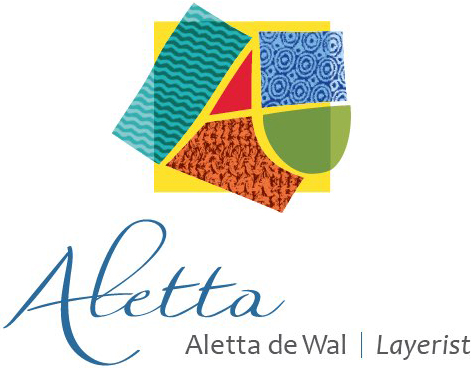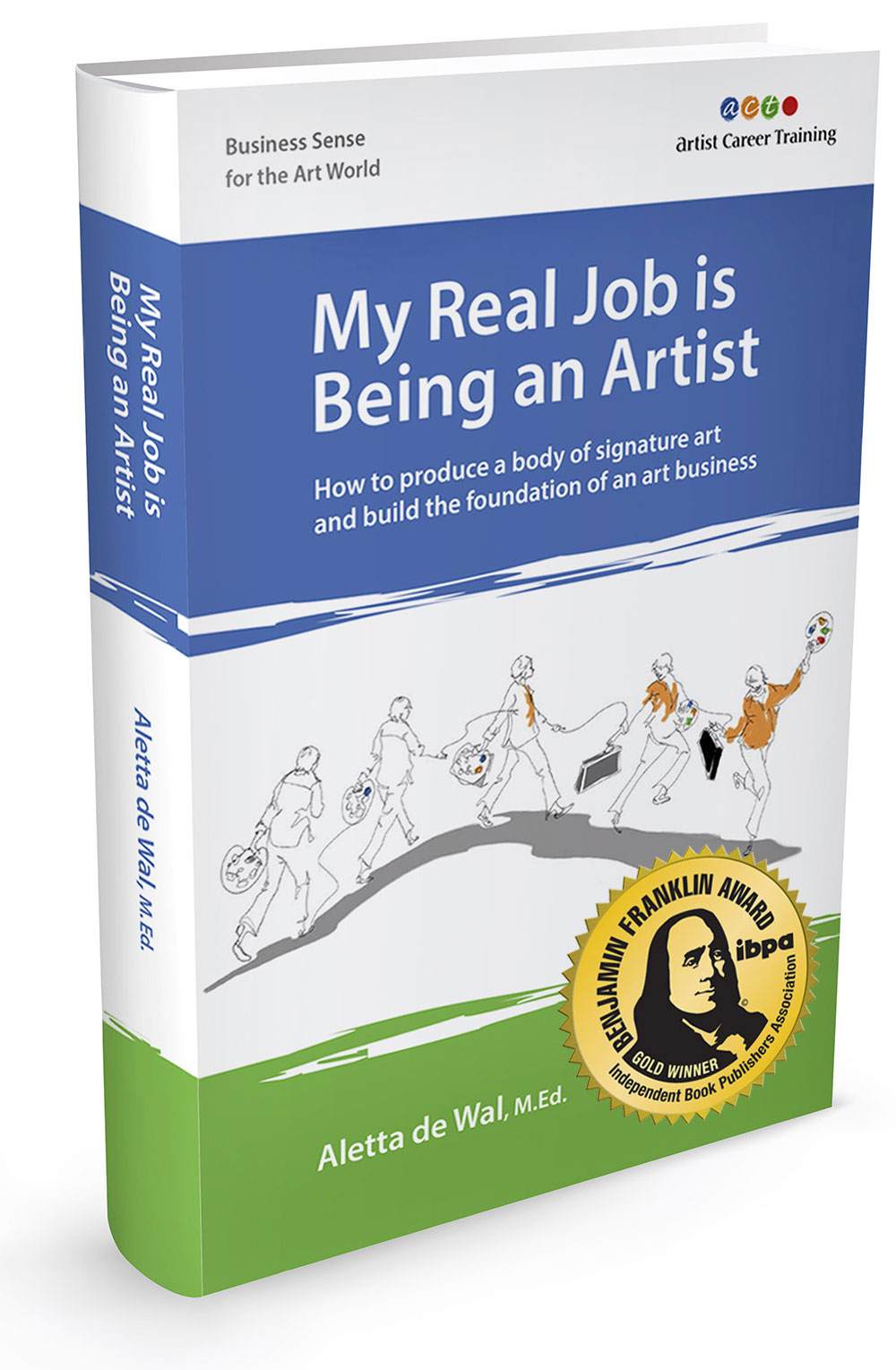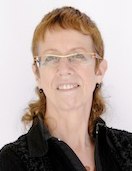There is often additional information on the recording that is not in this written interview. Inspire yourself and listen while you make art.
__________________________________________
My primary goal in these interviews is to inspire artists with stories of people who make a living making art and who consider it "a real job." Your art and art career may be on a different path, but there is always something to learn from the experiences of your colleagues.
Interview #2: Bruce Marion, Painter & Illustrator
 ©2010 Bruce MarionBruce Marion proves that you don't have to starve - in fact you can thrive - if you take your job as an artist seriously. Since he first joined the A.C.T. community a few years ago in Master Your Art Business, I have had the pleasure of watching his career grow. I frequently tell artists to study his career as an example of what is possible if you are wiling to work hard and smart. If you want to do this, start with our last interview. I also encourage you to listen to the audio for this issue as there were a lot of great digressions you won't want to miss.
©2010 Bruce MarionBruce Marion proves that you don't have to starve - in fact you can thrive - if you take your job as an artist seriously. Since he first joined the A.C.T. community a few years ago in Master Your Art Business, I have had the pleasure of watching his career grow. I frequently tell artists to study his career as an example of what is possible if you are wiling to work hard and smart. If you want to do this, start with our last interview. I also encourage you to listen to the audio for this issue as there were a lot of great digressions you won't want to miss.Whether exploring geometric shapes, portraying the human form, or interpreting lush landscapes, Bruce Marion's lyrical coloration and dramatic use of light and shadow, characterized by his distinctive "inner glow," seem to illuminate his subjects from their souls.
Long a student of the Martial Arts, Marion believes in the chi of inanimate objects, and seeks to "discover" the form and energy of his subjects from within his canvas, rather than to paint them from without. Thus, each piece begins not from a blank canvas, but from a frenetic and wildly colorful abstract under-painting. Then, like a sculptor chipping away at a stone, Marion seeks his subject by selectively subtracting information from the canvas before him.
A.C.T.: What are the major art and business milestones you have created since we last spoke?
 ©2010 Bruce Marion I have hit many new milestones in my career. I just completed my largest-to-date public commission project, creating 10 large-scale paintings for Sam Houston State University. I've expanded my gallery representation from 3 galleries to 7. I also signed with a licensing representation firm, and as a result have pieces coming out with various publishers, including New York Graphic Society and Art In Motion. In addition, I've started teaching classes at my studio; I created a two-day painting workshop called "Breakthrough!" as well as one-day life drawing classes.
©2010 Bruce Marion I have hit many new milestones in my career. I just completed my largest-to-date public commission project, creating 10 large-scale paintings for Sam Houston State University. I've expanded my gallery representation from 3 galleries to 7. I also signed with a licensing representation firm, and as a result have pieces coming out with various publishers, including New York Graphic Society and Art In Motion. In addition, I've started teaching classes at my studio; I created a two-day painting workshop called "Breakthrough!" as well as one-day life drawing classes.A.C.T.: How has your artistic direction developed?
My art continues to evolve. For a number of years the work I'd shown had been predominantly abstract, but my love of the figure kept calling me back. So, three years ago, I began combining the two, introducing highly expressive, loosely painted figures into my abstract canvases. The response from collectors was phenomenal! Since then, I've expanded the line even further, adding abstracted landscapes into the mix this past year.
 ©2010 Bruce Marion I've also begun playing with sculpture once again, first in cast bronze figures installed within an abstract painting, and now slowly moving into to stand-alone figurative sculpture, but still very abstracted... it's as if one of my painted figures 'hopped off' the canvas and into 3-D. I love to constantly grow and explore as an artist.
©2010 Bruce Marion I've also begun playing with sculpture once again, first in cast bronze figures installed within an abstract painting, and now slowly moving into to stand-alone figurative sculpture, but still very abstracted... it's as if one of my painted figures 'hopped off' the canvas and into 3-D. I love to constantly grow and explore as an artist.A.C.T.: What are your business goals for the next year?
- Do more PR !!! I am improving my press exposure, expanding my web presence (adding video to the mix), and becoming better with social media, which has great business potential.
- I am revamping my website to be more effective (and easier to update regularly).
- Continuing to build my licensing business, increasing the number of images produced under my name and under pseudonyms.
- Expand my public commission applications/awards, through CAFÉ and effective networking/advertising (particularly targeting designers and architects of institutional buildings).
- Expand my teaching with advanced workshops, and again be more effective with PR to expand my student base.
- Continue to learn and develop as an artist.
- Continue to learn and refine my business skills
 ©2010 Bruce Marion I'd definitely consider the Sam Houston job to be a "major project," not only for the number of pieces they commissioned, but for the sheer size of the canvases. I was chosen from a nation-wide search to create the artwork for the two major entrance ways of their new Humanities and Social Sciences building, one a two-story and one a three-story atrium. The works were custom-designed for the spaces, with finished sizes as large as 12' x 17'. It was quite a project - one that really pushed me to grow as an artist
©2010 Bruce Marion I'd definitely consider the Sam Houston job to be a "major project," not only for the number of pieces they commissioned, but for the sheer size of the canvases. I was chosen from a nation-wide search to create the artwork for the two major entrance ways of their new Humanities and Social Sciences building, one a two-story and one a three-story atrium. The works were custom-designed for the spaces, with finished sizes as large as 12' x 17'. It was quite a project - one that really pushed me to grow as an artistI've also had two one-man shows, one at Translations Gallery in Denver, and one at the James Ratliff Gallery in Sedona, AZ.
Last year marked my 6th year of participation in the Celebration of Fine Art in Scottsdale, AZ. That show is very exciting, but challenging too, because it runs 7 days a week for 10 weeks, which means I'm there every day from 10am to 6pm. So it's tough at times, but overall it's very rewarding. You're working and talking with folks all day, so you can really get to know your collectors, as well as get all this positive response to your work. My wife Lee has created a beautiful studio space and showroom for me that gets built each year at the beginning of the show, and then torn down when it ends. There are 100 artists participating each year and it's a very exciting environment to create and sell in.
A.C.T.: How do you manage multiple projects?
I work in a very organic way. I have a general list of what needs to get done by when, and I'll tackle different parts of it each day. But unless I'm on deadline, I don't "force" myself to do a particular thing at a particular time. I typically like to do the analytical, 'business-type' things in the morning, such as bill paying, writing and responding to emails, reading blogs, etc.
My business office is at home and this works well. At the studio, which is about a mile from my house, I usually have 3 or 4 paintings going at a time. Sometimes I like to put in longer hours on a piece, but many times I'll work a short while on one and then jump to another. Again, this is a very organic process, and relies on when it feels right to take a break on a piece. I've learned to give myself permission not to paint for a few days if I don't want to... typically, the work I've produced while trying to adhere to a formal, structured schedule winds up feeling, well, formal and structured.
My wife Lee also does a lot of work for the business and helps a great deal with projects. She is a brilliant writer, so she'll take the lead on writing and editing our printed materials. When involved in putting a show on, she designs and hangs all of my work. She's trained in theatrical design, and has done a lot of interior design work as well, so she has a great sense of space, color and movement.
A.C.T.: Please describe a typical day, and a typical month so readers can understand how you manage your time, money and energy.
My typical day starts about 6 a.m. I'll check emails, then head to the gym for an hour (30 minutes of aerobics and 30 minutes of weights). Then after breakfast, Lee and I will go over the general plan for the day. Most often, I'll end up doing office/computer work until lunch, then hit the studio to work on commissions, pieces for my galleries, or artwork for licensing in the afternoon.
Because I'm working by myself so much of the time, I like to go out to lunch most every day. It gives me a necessary change of energy, and allows me to keep up on my reading...I subscribe to American Art Collector, Art Business News, and Inc. Magazine, plus am also usually working on a book or two. I just finished reading Richard Schmid's Alla Prima - Everything I Know About Painting, and Seth Godin's Linchpin - Are You Indispensable? They're both excellent, as is the very inspiring The Last Lecture, by Randy Pausch, which I'm currently reading. Art education, business education, and life lessons... that pretty well sums up all of my reading material!
I try to wrap things up at the studio by 5 or 6 p.m., to get home for dinner and family time.
Of course, if I have a show or commission coming up to deadline, I'll often have to work late into the evening. In those 'crunch times,' I don't even go home for dinner- it's just too hard to make myself get back to work if I do.
January through March I'm in the Celebration of Fine Art show, which has a major impact on the entire family's schedule. With the show running 7 days a week, while all of the rest of the work with galleries and licensing continuing to demand attention, our lives turn upside-down, and basically revolve around surviving it all.
When the crunch is over, I go to a lot of movies, meet up with friends for lunch, or just let myself 'waste' the day doing almost nothing... it balances out in the end.
A.C.T.: What is your current art marketing strategy? What promotional materials and actions do you use most often?
As we continue to hone and build facets of the business, it's becoming more and more difficult for Lee and I to take advantage of every marketing opportunity- there just isn't time! Currently, Lee puts together Constant Contact newsletters that we send to our mail list every six weeks or so... We try to keep them interesting, by varying the subject matter (so it's not just "Bruce Marion did this..." every time). She's done 'behind the scenes' looks at building our Celebration booth - people loved that! One newsletter was all about the art world as seen through the eyes of my dog, Matisse - sounds nuts, but that was easily the most popular one ever, and brought in the most replies!
We have what I consider to be some 'slow-mo' promo materials, also - a beautiful book ("Bruce Marion-An Exploration of Texture and Form") spreading the word from collector's coffee-tables (and available for sale at my galleries and shows). Similarly, I have a line of note cards that I sell at the Celebration Show (and soon online), that allow another way for my images to spread. But I want to get better about issuing press releases, developing relationships and articles with art magazines, and with social networks. I'm currently looking for a student/intern, to work to expand my presence in all media.
I believe in giving back to the community. I regularly donate pieces to fund-raising auctions for causes I believe in. I love inspiring young people and telling them that art is a viable and rewarding career. In fact, when creating the Texas commissions, I arranged to work on some of the over-sized pieces at a local elementary school. Lee and I did a full day of presentations on art for over 300 kids in the auditorium. It was such a success, we'll be spending the month of May 2011 as "Artists-in-Residence" there, utilizing a grant from the state for art education. We'll work with the kids on creating five large paintings that will each be inspired by a piece of music. The finished paintings will then be permanently installed in the school's five buildings.
 ©2010 AGK
©2010 AGKA.C.T.: You can see a great example of Bruce's high quality promotion for his collector's show here.
A.C.T.: What changes have you experienced in the art market and how have you navigated them? What lessons have you learned?
The art market, like most businesses, has been very challenging the last couple of years. I've purposely been pursuing multiple income streams from my work, so if one area slows down, I still have income from other avenues. It's the old, "Don't put all your eggs in one basket" scenario, and it plays out on many levels. Take galleries, for example- if you're an artist showing in just one or two geographic areas, you're at greater risk from a downturn than if your work is many different regions, so I've been methodically expanding my gallery representation to cover a wider geographic range. I've also been building income streams from licensing and teaching, as well as pursuing more public commissions like Sam Houston.
It's important that once you get some success in an area, ask yourself, "How can I build on that?" And do that...continue to build. Don't be afraid to work hard for what you believe in. If you need to develop a skill, learn it, take a class, buy a video- don't let fear stand in the way of taking action. Invest your time and energy not just in art, but in the business of art. Hone your craft, and become an expert at what you do... then become an expert at marketing what you do.
A.C.T.: What legal measures do you take to protect your work? How do you plan to handle copyright if the Orphan Works Law passes?
Artwork is protected and copyrighted upon creation. I document all of my work with an inventory number and good quality photographs, and I maintain a database to keep track of all my pieces (title, size, date of completion, price, location-at a gallery or in a collection).
If the Orphan Works Law passes, I'll research what the experts say is the best course of action to protect my individual works. Of course, I hope it doesn't pass, as it will certainly mean more time and attention will need to be devoted to protecting rights I already have, so I've been actively fighting the legislation along with many other artists and creative professionals I know. But in the interim, I just don't feel it's in my best interests to focus on the negative possibilities.
My best defense is to keep creating pieces that are so richly textured and layered that they cannot be easily copied. The truth is, there are people out there who may try to copy your work, but think about it... wouldn't someone intent on plagiarizing an artist for profit target someone who's making hundreds of thousands, or millions, of dollars worth of work worldwide? Unless you're in that category, I think an undue amount of fear and energy put into that area can dilute your focus, and keep you from producing at your potential.
With that said, being a business professional, if I did find an individual or company illegally using my work for profit, I would take proper legal action and go after them. Beyond that, do your best to ensure you're doing business with honest and reputable people, whether they're licensing companies, galleries, or collectors. Use smart business practices, and be kind, honest, and fair in all your dealings. And write your congressman about how the Orphan Works Law will hurt artists. For more information about it go to a great Q&A about it on the Illustrators Partnership website.
A.C.T.: Based on your involvement in the Artist Career Training community of professional artists, how can other artists benefit from getting involved in our programs and coaching services?
There is tremendous benefit in being involved with Artist Career Training. You will accelerate your learning and get on the right track to reach your goals. Being a great artist alone will not create a successful career. You need to learn how to market that work, and how to run an art business (and for some strange reason, they don't teach that in art school). Aletta and Artist Career Training are great for helping you complete this very necessary education.
Aletta will guide you in the right direction, and help you avoid the pitfalls and stalls that befall many a would-be artist. Of course, there's no secret formula here, that once you know it, your career will take off. You'll need to work... but with the help of Artist Career Training, you can know you're working intelligently, pointed in the right direction.
And the experience and camaraderie of the other artists in the program make for a wonderful and supportive community where you can grow. I'm grateful for my time in the program, and highly recommend it to any burgeoning artist. Aletta's passion is in helping you succeed.
Born in 1956 in the San Fernando Valley, a suburb of Los Angeles, Bruce Marion began his art career at an early age. Inspired by his father, Sam Marion, an accomplished artist himself, the younger Marion showed clear evidence of a natural ability. He began private study with a cadre of local artists, and sold his first piece in a juried professional show when just nine years old.
Marion received his BFA from the prestigious Art Center College of Design in Pasadena, where he studied with world-renowned artist Pat Nagel, and Lorser Feitelson, the father of Post-Surrealism. He taught at the Otis Parsons Institute of Art in Los Angeles, as well as privately.
Marion is represented by galleries throughout the United States, and his paintings are published and distributed worldwide by Editions Limited. He lives in Chandler, Arizona with his wife and daughter. You can see his work and learn more about him here:
www.brucemarion.com
www.brucemarion.com
Stay tuned to these interviews for a sequel interview with Bruce's wife Lee. You will learn more about working in partnership.











